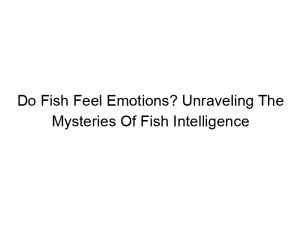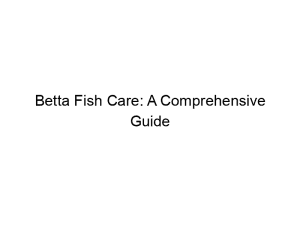Choosing the right diet for your fish is crucial for their health, growth, and vibrant colors. This comprehensive guide will delve into the age-old debate: Live Food vs. Pellets: What’s Best for Your Fish? We’ll explore the pros and cons of both, comparing nutritional value, convenience, cost, and suitability for different species. By the end, you’ll be equipped to make informed decisions to ensure your aquatic companions thrive.
Live food encompasses a wide variety of small, living organisms that fish consume. This includes insects like daphnia and bloodworms, crustaceans such as brine shrimp, and even small fish like guppies (for larger predatory species). Live foods are often considered the most natural and appealing option for many fish.
Live food boasts a higher protein content and a richer blend of
essential fatty acids, vitamins, and minerals compared to many pellet options. This enhanced nutritional profile contributes to faster growth, brighter coloration, and improved overall health. For example, daphnia are excellent sources of carotenoids, vital for vibrant fish colors.
Types of Live Food and Their Uses
The best live food choice depends heavily on the specific fish species. Small, delicate species might thrive on micro-worms, while larger, predatory fish require larger prey items like guppies or feeder goldfish. Brine shrimp are a popular staple for many, offering a good balance of nutrition and ease of culturing.
- Daphnia: High in protein and essential fatty acids.
- Bloodworms (Chironomid larvae): Rich in protein and iron.
- Brine Shrimp (Artemia salina): Easy to culture, good source of nutrition.
- Tubifex worms: High in protein but can contain parasites if not properly sourced.
Challenges and Limitations of Live Food
Potential for Disease and Parasites
Live food can introduce diseases and parasites into your aquarium if not properly sourced and handled. Wild-caught live food carries a higher risk than commercially produced cultures. Thorough inspection and quarantine before introducing live food into your main tank is crucial.
Cost and Time Commitment
Culturing your own live food can be time-consuming and requires specialized equipment, though it’s cost-effective in the long run. Purchasing live food regularly can become expensive, especially for larger tanks or species with high dietary needs.
Storage and Preservation
Live food has a limited shelf life. Unconsumed live food must be removed promptly to prevent water contamination. Efficient management is essential.
Understanding Fish Pellets
Types of Fish Pellets
Fish pellets come in various formulations to cater to different species and dietary requirements. There are sinking pellets for bottom feeders, floating pellets for surface feeders, and slow-sinking pellets for mid-water feeders. Formulations also vary based on age, such as juvenile or adult formulas.
Nutritional Content of Fish Pellets
High-quality fish pellets are formulated to provide a balanced diet, often supplemented with vitamins and minerals. However, they may not always match the nutritional richness of live food, particularly concerning essential fatty acids. Reading the label carefully is essential, comparing protein, fat, and fiber content.
Choosing the Right Pellets
The best pellets for your fish will depend on their species, size, and activity level. Consult with an experienced aquarist or refer to reputable online resources for recommendations based on your specific setup.
Benefits and Limitations of Fish Pellets
Convenience and Ease of Use
Pellets are undeniably convenient. They are readily available, require no special handling or culturing, and have a longer shelf life compared to live food. This makes them an ideal choice for busy aquarists.
Cost-Effectiveness
In the long run, fish pellets are often more cost-effective than regularly purchasing live food, especially for larger tanks. The initial investment might seem higher, but the sustained cost is typically lower.
Potential Nutritional Deficiencies
While many high-quality pellet formulations are well-balanced, they may still lack the diversity of nutrients found in live food. Supplementation with occasional live food or specialized supplements can help address this.
Live Food vs. Pellets: A Direct Comparison
Nutritional Value
Live food generally provides a wider range of nutrients and higher levels of essential fatty acids than pellets. However, high-quality pellets can provide a well-rounded diet, especially when supplemented.
Convenience
Pellets are significantly more convenient than live food, requiring minimal effort for feeding. Live food necessitates culturing, purchasing, and careful handling.
Cost
While the initial cost of pellets may be higher, the overall cost per feeding is usually lower than consistently purchasing live food.
Disease Risk
Live food carries a higher risk of introducing diseases and parasites compared to commercially produced pellets.
Developing a Balanced Diet for Your Fish
Combining Live Food and Pellets
The optimal approach for many aquarists is to combine live food and pellets, offering a diverse and balanced diet for their fish. This approach allows you to capitalize on the nutritional benefits of live food while enjoying the convenience and cost-effectiveness of pellets.
Feeding Frequency and Portion Size
Overfeeding is detrimental to fish health and can lead to water quality issues. Consult reliable sources for recommended feeding schedules and portion sizes for your specific fish species. Observe your fish’s feeding behavior to adjust accordingly.
Monitoring Your Fish’s Health
Regularly observe your fish for signs of health issues, such as lethargy, loss of appetite, or unusual behavior. Early detection allows for prompt intervention and helps prevent problems from escalating.
Choosing the Right Live Food for Specific Fish Species
Small, Delicate Fish
Micro-worms, infusoria, and baby brine shrimp are ideal for small, delicate fish like neon tetras and guppies. These smaller live foods are easier to digest and less likely to cause digestive problems.
Medium-Sized Fish
Daphnia, brine shrimp, and small bloodworms are suitable for medium-sized fish. These offer a better balance of nutrition and size.
Large, Predatory Fish
Larger live foods like larger bloodworms, feeder fish (with caution!), and insects are appropriate for larger, predatory fish. Remember to consider the potential for introducing disease with feeder fish.
Choosing the Right Pellets for Specific Fish Species
Herbivores
Herbivorous fish require pellets formulated with high levels of vegetable matter, algae, and plant-based proteins. Spirulina-based pellets are a common choice.
Omnivores
Omnivorous fish need a balanced diet of both plant and animal-based ingredients. Look for pellets that provide a good blend of protein and carbohydrates.
Carnivores
Carnivorous fish require pellets with high protein content and ingredients like fish meal, krill, and shrimp. Pellets specifically designed for carnivorous species are readily available.
Setting Up for Successful Live Food Culture
Choosing a Culture System
Numerous methods exist for culturing live food, ranging from simple jars to more sophisticated systems. The choice depends on the type of live food and the scale of your operation.
Maintaining Water Quality
Maintaining optimal water parameters is critical for successful live food culturing. Regular water changes and monitoring of temperature and pH levels are essential.
Feeding Your Live Food Cultures
Live food cultures require regular feeding with appropriate food sources. Insufficient or improper feeding can result in poor growth or culture failure.
Frequently Asked Questions
What are the main differences between live food and pellets?
Live food generally offers superior nutritional value, but is more expensive, less convenient, and has a higher disease risk. Pellets are convenient, cost-effective, but can lack the full spectrum of nutrients found in live food.
Can I feed my fish only live food or only pellets?
While possible, it’s generally recommended to combine both for a balanced diet. Exclusive live food diets can be expensive and introduce disease risk, while an exclusive pellet diet might lack certain nutrients.
How often should I feed my fish?
Feeding frequency depends on the fish species, their size, and activity level. Generally, small portions are better than infrequent large feedings. Observe your fish’s behavior to determine appropriate feeding frequency.
What are the signs of a healthy fish?
Healthy fish are vibrant, active, and have clear eyes and scales. They eat readily and display natural behaviors. Any changes in behavior or appearance might indicate a health issue.
What should I do if my fish are not eating?
Loss of appetite can signal several problems, including illness, poor water quality, or inadequate diet. Check water parameters, inspect for signs of illness, and consider dietary changes.
Final Thoughts
Choosing between live food and pellets for your fish is a matter of careful consideration, weighing convenience, cost, nutritional needs, and the risk of disease. A balanced approach, incorporating both live food and high-quality pellets, often provides the most comprehensive and beneficial diet. By understanding the strengths and weaknesses of each, you can create a tailored feeding plan that promotes the health and vitality of your aquatic companions, ensuring they live long, happy, and colorful lives. Remember to always prioritize the health and well-being of your fish, adapting your feeding strategy as needed.




